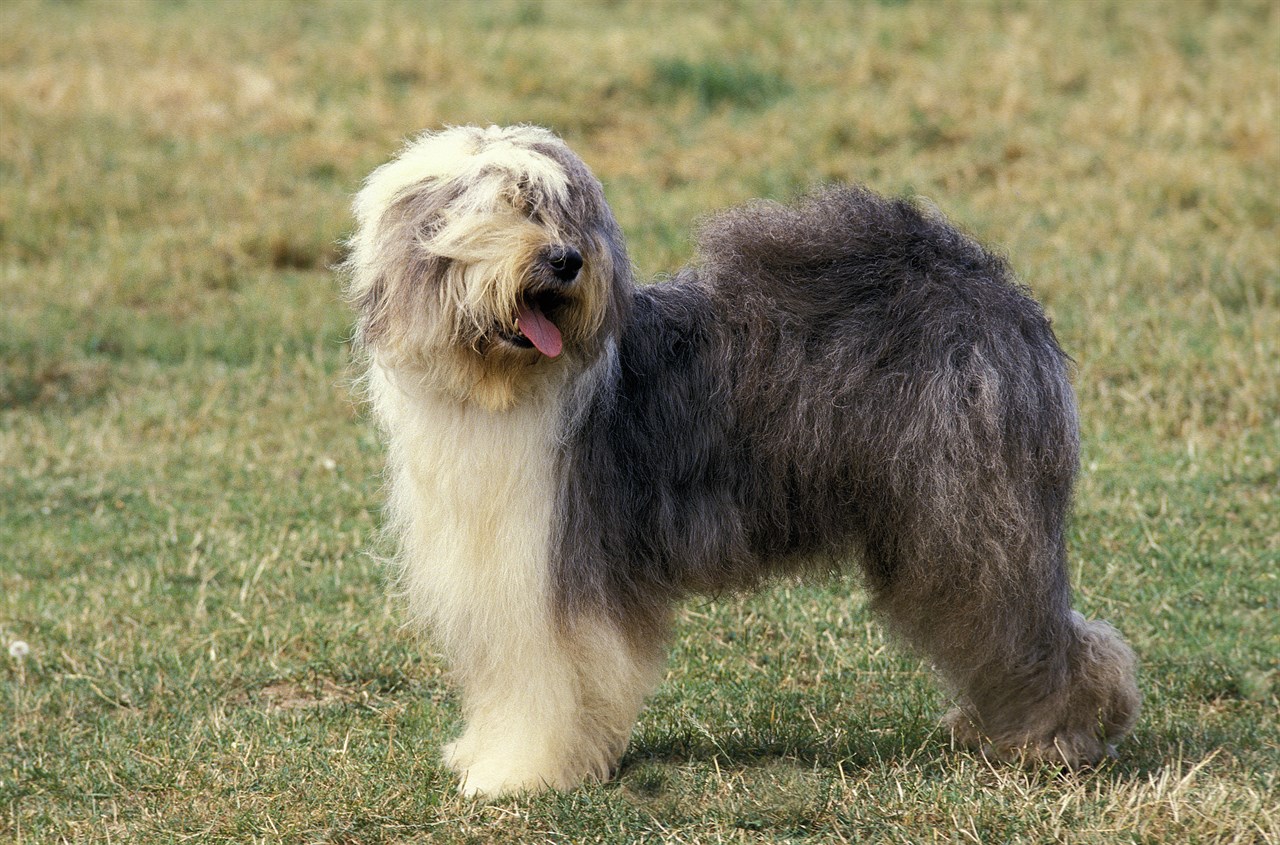Old English Sheepdog: The Gentle Giant of the Canine World

When one thinks of a herding dog, images of agility and athleticism may come to mind. However, there's one breed that defies these expectations with its unique appearance and easygoing nature – the Old English Sheepdog. Often referred to as the "Bobtail" or simply "OES," this breed stands out as a charming and distinctive member of the canine world. In this comprehensive exploration, we'll delve into the history, breed group, size, coat, colour, and appearance of the Old English Sheepdog. We'll also address some common questions about this fascinating breed.
History of the Old English Sheepdog
The history of the Old English Sheepdog is shrouded in the mists of time, making it difficult to pinpoint its exact origins. However, it is widely believed to have originated in England in the early 19th century. Originally, it was bred to work as a herding dog, tasked with driving sheep and cattle to market. With its distinctive appearance and shaggy coat, it earned its keep by not only herding but also protecting the flock from predators.
In the 20th century, Old English Sheepdogs made their way to the United States, where they became popular as both working dogs and family pets. Their amiable temperament and striking looks endeared them to many, and they soon became known as much for their role in Hollywood as for their herding abilities.
Also Known As
The Old English Sheepdog is also known as the bobtails by lovers of the breed.
Breed Group and Temperament
The Old English Sheepdog is classified as a member of the Herding Group by major kennel clubs, such as the American Kennel Club (AKC) and the United Kingdom Kennel Club (UKC). Herding dogs are known for their intelligence, trainability, and herding instincts, and the OES fits this mould perfectly.
Old English Sheepdogs are renowned for their friendly and affectionate nature. They are known to be excellent family dogs, often forming strong bonds with children. Their loyalty and protective instincts make them great companions and watchdogs. While they may appear somewhat aloof at first, they are generally quite social and thrive on human interaction.
Breed Size
Old English Sheepdogs are large dogs, and their size is one of their most distinguishing features. Males typically stand between 56 to 61 centimetres at the shoulder, while females are slightly smaller, ranging from 53 to 58 centimetres.Typically, males weigh between 36 to 45 kilogrammes, while females usually weigh between 27 to 39 kilogrammes.
Breed Coat, Colour, and Appearance
Perhaps the most iconic characteristic of the Old English Sheepdog is its luxurious coat. This breed sports a double coat consisting of a soft, dense undercoat and a harsh, shaggy outer coat. The coat is usually grey or blue-grey, often with white markings. The coat is so dense that it obscures the dog's body shape, creating a distinctive, bear-like appearance.
The Old English Sheepdog's head is broad and square, with expressive eyes that exude intelligence and a friendly demeanour. Their ears are medium-sized and lie close to the head, and they have a black nose and lips that contrast with their white or grey fur.
How big will an Old English Sheepdog get?
As mentioned earlier, Old English Sheepdogs are large dogs. They reach their full height at around 18 months of age but may continue to fill out and gain weight up until about two years old.
Why are Old English Sheepdogs not popular?
Old English Sheepdogs are not as popular as some other breeds for several reasons. Their shaggy coat requires frequent grooming and can be challenging to maintain, which may deter potential owners. Additionally, their size can be intimidating to some, even though their temperament is generally gentle.
Moreover, because they were originally bred as working dogs, their herding instincts can lead to them being quite active, and they require regular exercise and mental stimulation. People who are not prepared to meet these needs may find them to be too high-maintenance.
In conclusion, the Old English Sheepdog is a breed with a rich history, a distinctive appearance, and a gentle, affectionate temperament. While they may not be the most popular breed, those who choose to share their lives with an Old English Sheepdog often find a loyal and loving companion in these gentle giants. With proper care and attention to their unique needs, these dogs can make wonderful additions to any family, offering years of devotion and companionship.
Continue reading our Old English Sheepdog in-depth articles
- Old English Sheepdog Temperament and Behaviour
- Old English Sheepdog Training and Socialisation
- Old English Sheepdog Toilet Training
- Old English Sheepdog Barking Habits
- Old English Sheepdog Grooming Requirements
- Old English Sheepdog Shedding Behaviour
- Old English Sheepdog Sleeping Behaviour
- Old English Sheepdog Diet and Feeding Requirements
- Old English Sheepdog Average Lifespan
- Old English Sheepdog Exercise Requirements
- Old English Sheepdog Common Health Issues
- Old English Sheepdog Suitability Guide
- Old English Sheepdog Advantages
- Old English Sheepdog Disadvantages
- Old English Sheepdog Cost to Buy and Own
- Old English Sheepdog Clubs and Links
- Selling Old English Sheepdog Puppy Litters and Dogs
- Buying Old English Sheepdog Puppies and Dogs
- Old English Sheepdog Alternatives
Old English Sheepdog puppies for sale
- Find Old English Sheepdog puppies for sale in ACT
- Find Old English Sheepdog puppies for sale in NSW
- Find Old English Sheepdog puppies for sale in NT
- Find Old English Sheepdog puppies for sale in QLD
- Find Old English Sheepdog puppies for sale in SA
- Find Old English Sheepdog puppies for sale in TAS
- Find Old English Sheepdog puppies for sale in VIC
- Find Old English Sheepdog puppies for sale in WA